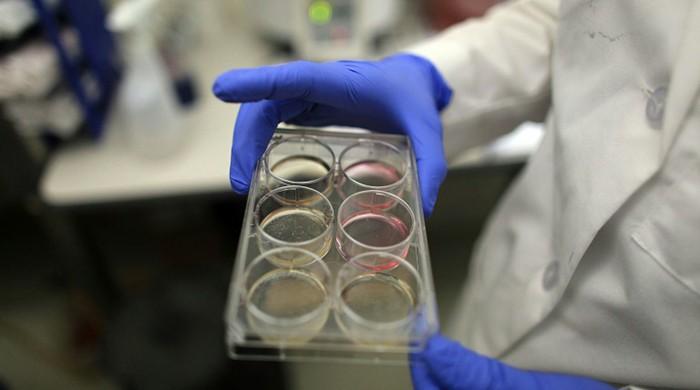'Milestone' in quest to make blood cells: studies
May 18, 2017

Scientists on Wednesday unveiled two methods for coaxing stem cells into blood cells, a long-sought goal that could lead to new treatments for blood disease, including leukaemia.
In separate experiments reported in Nature -- one with mice, the other transplanting human stem cells into mouse bone marrow -- researchers demonstrated techniques with the potential to produce all types of blood cells.
"This step opens up an opportunity to take cells from patients with genetic blood disorders, use gene editing to correct their genetic defect, and make functional blood cells," said Ryohichi Sugimura, a doctor at Boston Children's Hospital and lead author of one of the studies.
If proven safe, the proof-of-concept methods could also lead to a "limitless supply of blood" by using cells from universal donors, he added.
Human embryonic stem cells -- generic cells which, as the embryo develops, gradually differentiate -- were first isolated in 1998.
A decade later, scientists figured out how to generate another type of all-purpose cell from human skin, known as induced pluripotent stem cells, or iPS. These were successfully used to make neurons and heart cells.
But the goal of creating blood-forming stem cells in the lab remained out-of-reach.
Sugimura and colleagues devised a three-step process to achieve that breakthrough.
They began by inducing both embryonic stems cells and iPS to morph into a form of embryonic tissue that -- in a natural process -- gives rise to blood stem cells. This had been done before.
In the second crucial step, they experimented with dozens of proteins known to control gene expression, especially during the formative process of embryo growth.
Protein cocktail
They found that five of these so-called transcription factors, working together, yielded the elusive blood stem cells -- the starter kit for white and red blood cells, platelets, macrophages and all the other cell types of which blood is composed.
Finally, they transplanted these human blood stem cells into the bone marrow of live mice.
Within a few weeks, several kinds of human blood cells had formed, and were circulating in the rodents.
"We are now able to model human blood function in so-called 'humanised mice'," said George Daley, head of a research lab at Boston Children's Hospital and the main architect of the experiment.
"We're tantalisingly close to generating bona fide human blood cells in a dish," he added in a statement.
In the second study, a team led by Shahin Rafii at Weill Cornell Medicine in New York City used adult mouse cells as their starting material, and then guided them through several steps -- including exposure to some of the same gene-activating proteins -- to create mature blood stem cells in a petri dish.
Taken together, the two experiments "represent a milestone" in stem cell development, said Carolina Guibentif and Berthold Gottgens, researchers at the Cambridge Stem Cell Institute in England who did not participate in the work.
"The ability to manufacture HSCs" -- haematopoietic, or blood, stem cells -- "in the laboratory holds enormous promise for cell therapy, drug screening and studies of leukaemia development," they wrote in a commentary, also published by Nature.
A key concern, they noted, was the possible risk associated with using transcription factors that may themselves be linked to the early stages of leukaemia.
How these cocktails of catalysing proteins are inserted into developing tissue is of particular concern.
But new techniques of ultra-precise gene-editing, they added, could soon render such potential problems obsolete.











